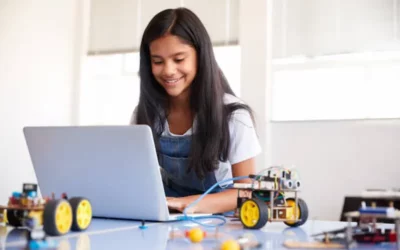Programming for kids introduces young learners to the fascinating world of coding and computer science. It is an educational approach that teaches children the fundamentals of writing instructions for computers to perform specific tasks. This introduction helps children develop problem-solving skills, logical thinking, creativity, and computational thinking abilities.
By learning programming, kids gain a deeper understanding of how technology works and become active creators rather than passive consumers. They can create their own games, animations, stories, and interactive projects, fostering their creativity and providing a sense of accomplishment.
Before diving into the blog, check out this video below.
Table of contents
- Introduction
- Choosing the Right Programming Language for Kids
- Basic Programming Concepts for Kids
- Fun Programming Projects for Kids
- Programming Tutorials for Kids
- Tips for Teaching Programming to Kids
- Online Coding Platforms for Kids:
- Choosing the Right Platform:
- Coding Toys and Kits for Kids:
- Selecting the Right Toy or Kit:
- Resources for Learning Programming for Kids
- Conclusion
- Frequently Asked Questions
Introduction
In today’s digital age, programming has become an essential skill for kids to learn. It fosters creativity and problem-solving abilities, and it also prepares them for future careers in technology.
Programming offers exciting opportunities for young people to engage with technology and education. And games can be a powerful tool for teaching kids to program as they make learning fun and engaging. This blog presents a list of Tips, Tools, and Techniques for Parents to teach programming to their kids. Check it out!
Choosing the Right Programming Language for Kids
When choosing a programming language for kids, consider their age, prior experience, and interests. Here’s a list of popular kids programming languages to start from –
1. Scratch: Scratch coding for kids is a visual programming language designed specifically for kids. It uses a block-based interface where kids can snap together code blocks to create animations, games, and interactive stories. Pros: Scratch is user-friendly, promotes creativity and problem-solving, and has a large online community for sharing and learning. Cons: Limited flexibility for complex projects and limited real-world application.
2. Python: Python is a versatile and widely-used programming language suitable for kids. It has a readable syntax and offers a balance between simplicity and power. Pros: Python is beginner-friendly, has a vast array of resources and libraries, and can be used for various applications, including web development and data analysis. Cons: It may require more text-based coding compared to visual languages, which can be initially challenging for young learners.
3. Ruby: Ruby is a dynamic and object-oriented programming language. While less commonly used for kids, it can be a viable option for more advanced learners. Pros: Ruby has a clean and elegant syntax, encourages good coding practices, and has a supportive community. Cons: Limited availability of resources and educational materials specifically tailored for kids.
4. Java: Java is a popular and widely-used programming language, often taught in schools and universities. It offers a solid foundation for learning object-oriented programming. Pros: Java has a vast ecosystem, and extensive documentation, and is used in many professional applications. Cons: It can be more complex for beginners due to its strict syntax and setup requirements.
Scratch is an excellent starting point for young children due to its visual nature. Python coding for kids provides a balance between simplicity and versatility. Ruby and Java may be more suitable for older or more experienced kids looking to delve deeper into programming. Ultimately, the choice depends on the child’s learning style and long-term goals.
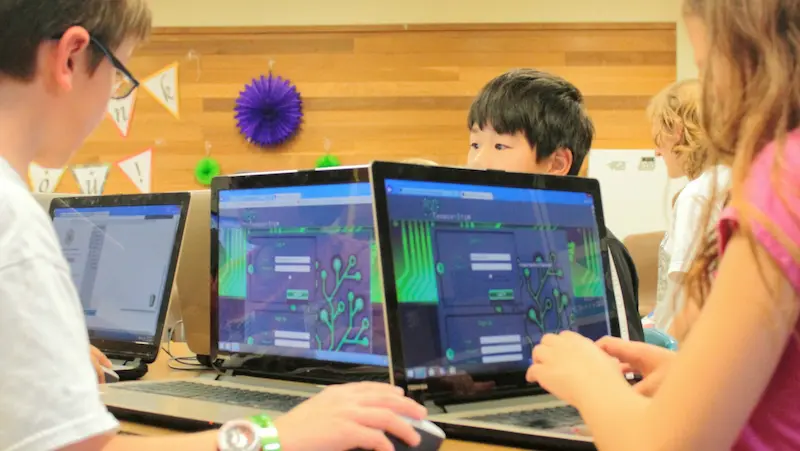
Basic Programming Concepts for Kids
To get started with coding for children, kids need to understand some basic programming concepts. Here’s a brief explanation of key concepts:
1. Variables: Variables are used to store and manipulate data in programming. They have a name and a value, which can be changed as the program runs. For example, a variable called “score” can hold the value of a player’s score in a game.
2. Data Types: Data types define the kind of data a variable can hold. Common data types include numbers (integer or float), strings (text), boolean (true/false), and lists (collections of data). Understanding data types helps kids work with different kinds of information.
3. Loops: Loops allow repeated execution of a block of code. The most common loop is the “for” loop, which repeats a set of instructions a certain number of times. Another loop is the “while” loop, which continues executing as long as a condition is true. Loops help kids automate repetitive tasks and iterate over data.
4. Conditional Statements: Conditional statements enable decision-making in programming. The “if” statement checks a condition and executes a block of code if it’s true. Kids can use “else” or “elif” (else if) to handle alternative conditions. Conditional statements allow kids to make choices and control the flow of their program.
By grasping these basic programming concepts, kids can start writing code and solving problems. They learn how to store and manipulate data using variables, make decisions using conditional statements, repeat actions with loops, and understand different data types. These concepts lay the foundation for more advanced coding skills and problem-solving abilities.

Fun Programming Projects for Kids
To make the learning process enjoyable, we’ve curated a list of fun and
easy programming projects that will inspire young minds. These projects are designed to be kids-friendly, providing an excellent foundation for kids to develop their programming skills:
1. Game Development: Kids can create their own interactive games using platforms like Scratch or Python. They can design characters, add animations, create levels, and implement game logic. Programming skills: Basic understanding of variables, conditionals, and event handling.
2. Website Creation: Kids can build their own websites using platforms like Wix, WordPress, or HTML/CSS coding. They can design web pages, add images, videos, and interactive elements, and even incorporate simple forums or blogs. Programming skills: Basic HTML/CSS knowledge for coding websites from scratch or drag-and-drop interface understanding for website builders. HTML Basics and CSS basics are easy to learn.
3. Mobile App Development: Kids can create simple mobile apps using tools like MIT App Inventor or Swift Playgrounds. They can develop apps that solve problems, tell stories, or provide entertainment. Programming skills: Basic understanding of variables, conditionals, and event handling, depending on the chosen app development platform.
4. Animation and Storytelling: Kids can use animation software like Scratch or Adobe Animate to create animated stories or short movies. They can design characters, create animations, add dialogue, and bring their stories to life. Programming skills: Basic understanding of animation concepts, such as motion, timing, and sequencing.
5. Robotics and Arduino Projects: Kids can explore the world of robotics by programming robots or creating projects with Arduino boards. They can build robots that follow lines, avoid obstacles, or perform specific tasks. Programming skills: Basic understanding of programming concepts like variables, conditionals, and loops, along with the ability to interface with hardware components.
These projects provide hands-on learning experiences, encourage creativity, and allow kids to apply their programming skills in real-world contexts. They can choose projects based on their interests and gradually develop their coding abilities while having fun.

Programming Tutorials for Kids
Below is the list of top resources that provide easy programming tutorials for children-
1. Code.org: Code.org offers a range of coding tutorials and activities suitable for kids of all ages. Their Hour of Code tutorials features popular themes like Minecraft, Star Wars, and Frozen, providing a fun and engaging way to learn programming concepts.
2. Scratch: Scratch provides an interactive and user-friendly platform for kids to create their own games, animations, and stories. They offer a step-by-step tutorial series called “Scratch Starter Projects,” guiding kids through the process of building various projects while learning programming fundamentals.
3. Khan Academy: Khan Academy’s Computer Programming section offers a variety of coding tutorials for kids. Their “Intro to JavaScript” tutorial introduces kids to the basics of coding class for kids using JavaScript and includes interactive challenges and exercises.
4. Blockly Games: Blockly Games provides a series of coding challenges and puzzles that use a block-based programming language. Kids can solve puzzles by arranging blocks of code, helping them develop problem-solving and logical thinking skills.
5. CodeCombat: CodeCombat combines coding with a game-like environment, making it an engaging platform for kids to practice their programming skills. They can learn languages like Python or JavaScript while playing through levels, battling enemies, and solving coding challenges.
These tutorials provide a structured and interactive learning experience for kids, allowing them to practice coding concepts in a fun and engaging way. They can progress at their own pace, gain hands-on experience, and develop their problem-solving abilities while building real projects or completing coding challenges.

Tips for Teaching Programming to Kids
1. Break Down Complex Concepts: Break down complex programming concepts into smaller, more manageable parts. Start with simple concepts and gradually introduce more advanced topics as kids gain confidence and understanding.
2. Encourage Experimentation: Encourage kids to experiment with code and explore different possibilities. Let them try different approaches, make mistakes, and learn from them. This fosters creativity and problem-solving skills.
3. Provide Hands-on Projects: Engage kids with hands-on projects that allow them to apply their coding skills in practical ways. Building games, creating animations, or developing simple apps gives them a sense of accomplishment and motivation to learn.
4. Use Visual Tools: Utilize visual programming languages or tools that offer a drag-and-drop interface. Visual representations make programming more accessible and help kids grasp programming concepts without getting overwhelmed by syntax.
5. Foster Collaboration: Encourage collaboration among kids by organizing coding clubs or pairing them up for free coding classes for kids & projects. Collaborative coding promotes teamwork, communication, and the exchange of ideas.
6. Gamify Learning: Gamify the learning experience by introducing coding programs for kids & challenges, competitions, or leaderboards. This adds an element of fun and motivation to the learning process.
7. Provide Immediate Feedback: Offer immediate feedback to kids on their code, highlighting both their strengths and areas for improvement. Constructive feedback helps them learn from their mistakes and grow as programmers.
8. Praise Effort and Accomplishments: Recognize and praise kids’ efforts and accomplishments in coding. Celebrate their achievements, big or small, to boost their confidence and foster a positive attitude towards programming.
9. Make it Relatable: Relate programming concepts to real-world examples or areas of interest for kids. Show them how coding is used in their favorite games, apps, or movies, making the learning experience more relevant and exciting.
By implementing these tips and tricks, teaching programming to kids can be a rewarding and enjoyable experience that sparks their interest in coding and helps them develop valuable skills for the future.
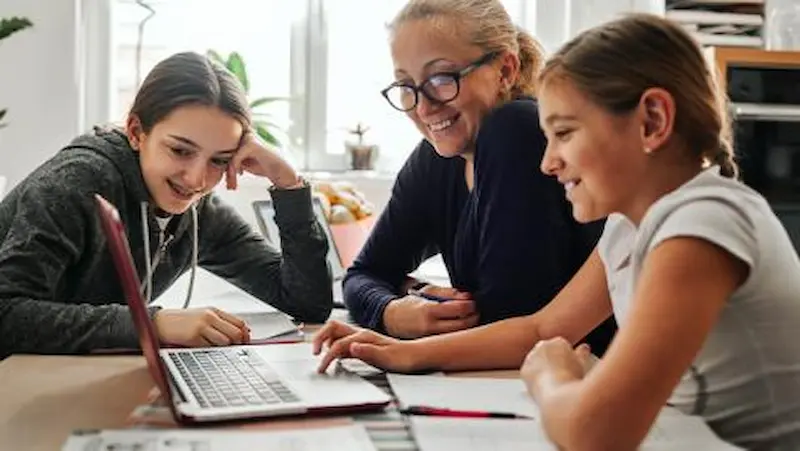
Are you aware BrightChamps has an extraordinary coding program called CodeChamps that ignites young minds with the power of coding through an engaging curriculum? It is a creative wonderland where kids dive into the captivating world of programming, learning to unravel complex algorithms and craft their own digital masterpieces.
To get your hands on more such educational and free resources on coding, robotics, game development, etc., do check out the Brightchamps Blog Page now!
Online Coding Platforms for Kids:
In today’s digital age, learning to code is not just a valuable skill for adults; it’s also an essential skill for kids. With numerous online coding platforms tailored to young learners, kids can now embark on an exciting journey into the world of programming. Here, we introduce some popular online platforms where kids can practice coding and share their projects with a thriving community.
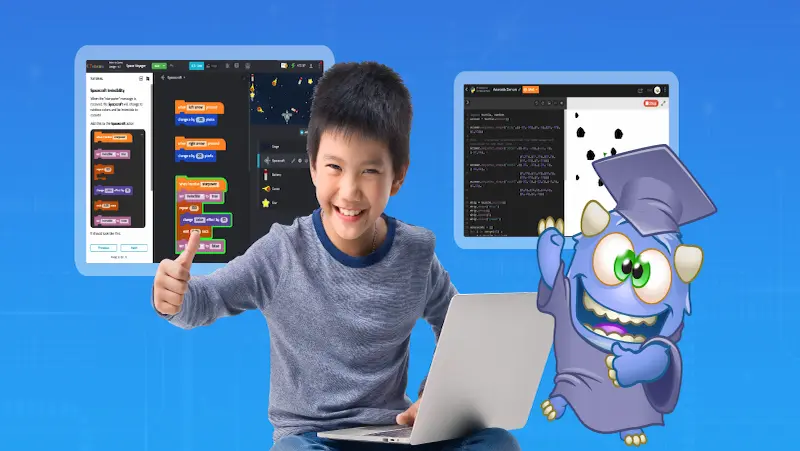
1. Scratch:
Features: Scratch is a visual programming language developed by MIT. It allows kids to create interactive stories, animations, and games using blocks of code that snap together.
Benefits: Scratch is beginner-friendly, fostering creativity and problem-solving. It encourages collaboration through shared projects and a supportive online community.
2. Tynker:
Features: Tynker offers interactive coding lessons, games, and challenges. Kids can code their own apps, games, and animations.
Benefits: Tynker provides structured learning paths and the ability to share projects with friends. It also integrates with popular STEM toys like LEGO Mindstorms.
3. Code.org:
Features: Code.org offers a wide range of coding activities and courses, including Minecraft and Star Wars-themed coding challenges.
Benefits: It’s free, accessible, and designed for beginners. Code.org’s curriculum aligns with school standards, making it an excellent choice for educators and parents alike.
4. Khan Academy:
Features: Khan Academy provides coding courses in collaboration with partners like Pixar and NASA. Kids can explore coding alongside math, science, and art.
Benefits: It offers high-quality content, and its association with reputable organizations enhances its credibility.
Choosing the Right Platform:
1. Consider your child’s age, interests, and prior coding experience.
2. Look for platforms with engaging, interactive content and a supportive community.
3. Some platforms offer a mix of free and paid content, so evaluate your budget.
4. Take advantage of free trials or sample lessons to see which platform resonates with your child.
Coding Toys and Kits for Kids:
Physical coding toys and kits are a fantastic way to introduce children to programming concepts in a hands-on, fun manner. Let’s explore this exciting world and highlight some specific products that are perfect for kids of various age groups and skill levels.
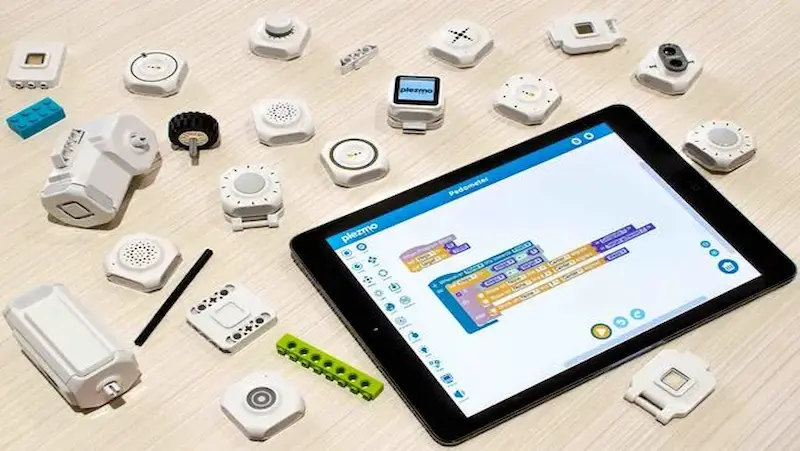
1. LEGO Mindstorms:
Features: LEGO Mindstorms combines the creativity of LEGO with programmable robotics. Kids can build and code their robots.
Recommendation: Ideal for children aged 10 and above, it’s perfect for those interested in robotics and engineering.
2. Ozobot Bit:
Features: Ozobot Bit is a tiny robot that follows lines drawn on paper and can be programmed using a simple color-coding system.
Recommendation: Suitable for kids aged 6 and up, it’s a great entry point for younger children to learn coding basics.
3. Cubetto:
Features: Cubetto is a wooden robot that introduces coding through a tangible interface, helping preschoolers learn the fundamentals of programming.
Recommendation: Perfect for kids aged 3 to 6, it’s an excellent tool to start early coding education.
4. Anki Cozmo:
Features: Cozmo is a cute, AI-powered robot that helps kids learn to code through games and activities.
Recommendation: Suitable for kids aged 8 and above, it combines coding with a playful, interactive experience.
Selecting the Right Toy or Kit:
1. Consider the child’s age and interests when choosing a coding toy.
2. Some toys may require a smartphone or tablet, so check compatibility.
3. Read reviews and ask for recommendations from other parents to ensure you make the right choice.
4. Whether you opt for online coding platforms or physical coding toys, the world of coding education for kids is vibrant and ever-expanding. These resources provide a foundation for children to develop problem-solving skills and creativity, setting them on a path to succeed in the digital age.
Resources for Learning Programming for Kids
1. Online Coding Courses:
– Code.org: Provides free online coding courses and activities suitable for kids of all ages. Benefits include a structured curriculum, interactive lessons, and a variety of coding projects.
– Khan Academy: Offers coding courses covering various programming languages. Provides step-by-step tutorials, interactive coding challenges, and immediate feedback.
– Coursera: Offers online coding courses for kids, including beginner-friendly options. Provides video lectures, quizzes, and hands-on coding exercises.
2. Coding Books:
– “Coding for Kids: Python” by Adrienne Tacke: Introduces kids to Python programming with easy-to-understand explanations and fun projects for coding for kids online or offline.
– “Hello Ruby” by Linda Liukas: Teaches programming concepts using stories and interactive exercises, making it engaging for young learners.
– “Scratch Programming Playground” by Al Sweigart: Offers step-by-step instructions and coding projects using Scratch, making it suitable for beginners.
3. Coding Camps and Workshops:
– Code.org: Organizes coding events and workshops worldwide, offering hands-on coding experiences and collaboration opportunities.
– ID Tech Camps: Conducts coding camps and workshops for kids, covering various programming languages and technologies. Provides personalized instruction and project-based learning.
4. Coding Toys and Games:
– LEGO Education: Offers coding-themed LEGO sets like LEGO Boost and LEGO Mindstorms, combining building and coding activities to foster creativity and problem-solving.
– Osmo Coding: Combines physical blocks and an interactive app to teach coding concepts to young children in a hands-on and playful manner.
– Sphero: Provides programmable robots like Sphero SPRK+ and Sphero Mini, allowing kids to learn coding through hands-on exploration and experimentation.
Benefits of these resources include:
– Interactive and engaging learning experiences.
– Step-by-step instructions suitable for different skill levels.
– Immediate feedback and progress tracking.
– Hands-on fun coding projects for kids and real-world applications.
– Opportunities for collaboration and peer learning.
– Accessible platforms and tools that cater to different learning styles.
These resources offer diverse options for kids to learn programming in a fun and engaging way, fostering their creativity, critical thinking, and problem-solving skills while building a foundation in coding. Exploring computer programs for kids can provide structured learning experiences to maximize these educational benefits.
Conclusion
Programming for kids nurtures important skills such as critical thinking, perseverance, and teamwork. It encourages them to break down complex problems into smaller, manageable steps and find innovative solutions.
Collaborative coding activities also promote communication, collaboration, and the sharing of ideas. Programming is not just about learning a new skill; it also prepares children for the future. In an increasingly digital world, coding and computational thinking are becoming essential skills in various fields.
By starting early, kids can develop a solid foundation in programming, opening doors to potential careers in technology, engineering, and other STEM disciplines.
In conclusion, programming for kids offers a valuable opportunity for young learners to engage with technology, develop problem-solving abilities, and cultivate creativity. It equips them with essential skills for the future while igniting their curiosity and passion for the world of coding and computer science.
To get your hands on more such educational and free resources on coding for kids, robotics, game development, etc., do check out the BrightCHAMPS Page now!
Frequently Asked Questions
Programming is the process of creating instructions that a computer can understand and execute. It involves writing logical instructions using a programming language to solve problems, automate tasks, and build software applications. Beginner programming for kids helps in Computational Thinking, Creativity and Innovation, Problem Solving, Logical Reasoning, and Mathematics & Career Opportunities.
Kids as young as 7 years of age can start coding and learning programming basics. In fact, programming for kids has gained popularity rapidly in recent years.
Scratch, Python, and JavaScript are popular programming languages for kids due to their simplicity, versatility, and extensive learning resources available.
Yes, learning programming for kids also promotes logical thinking, problem-solving, and creativity, and enhances computational and analytical skills.
Some fun and engaging ways to teach programming to kids include using interactive coding games for kids free, robotics kits, coding puzzles, coding camps, and creative coding projects.
Introduce coding concepts early on, even before formal programming languages. Encourage activities like sequencing, problem-solving, and logical thinking through puzzles and games. Encourage kids to work on hands-on coding projects.
Yes, risks include excessive screen time, potential exposure to inappropriate content, cyberbullying, and online privacy concerns. Supervision and education about online safety are important.
Yes, kids with learning differences or disabilities can learn programming. There are resources like coding platforms with accessibility features, inclusive coding curricula, and supportive online communities available to support their learning.
Programming skills can benefit kids in their future careers by enhancing problem-solving abilities, fostering creativity, and opening doors to opportunities in fields like technology, engineering, and innovation.
Yes, there are online resources like BrightCHAMPS and other tools like Code.org, Scratch, Khan Academy, and coding apps that provide opportunities for kids to practice programming at home.

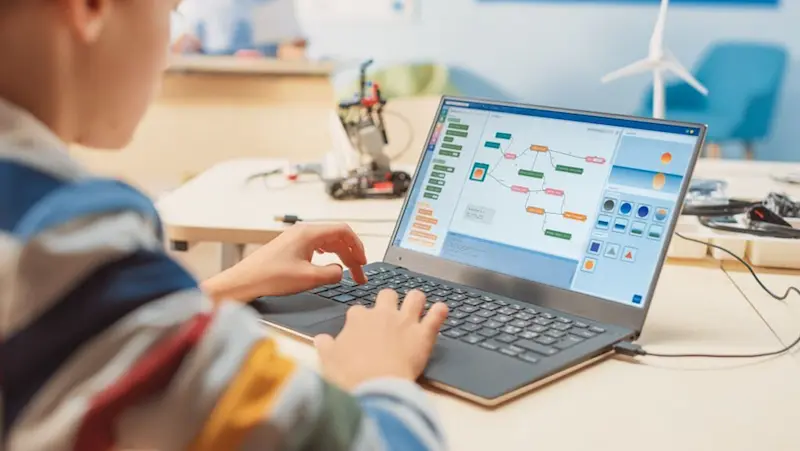
 We are an army of educators and passionate learners from BrightChamps family, committed to providing free learning resources to kids, parents & students.
We are an army of educators and passionate learners from BrightChamps family, committed to providing free learning resources to kids, parents & students.











